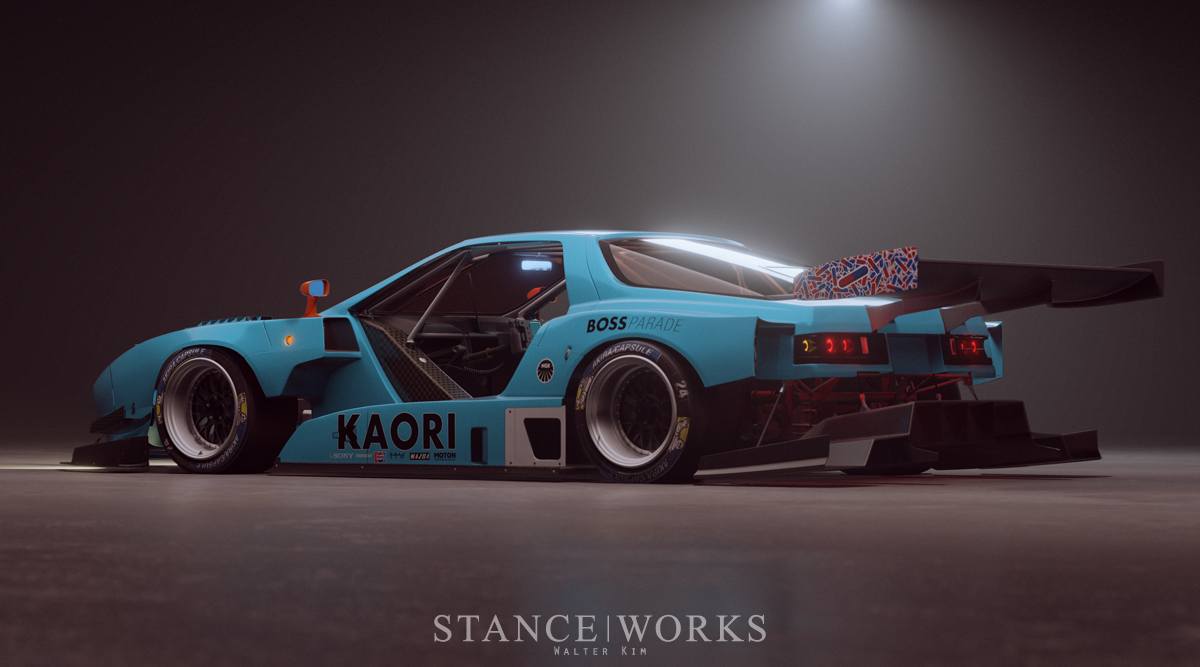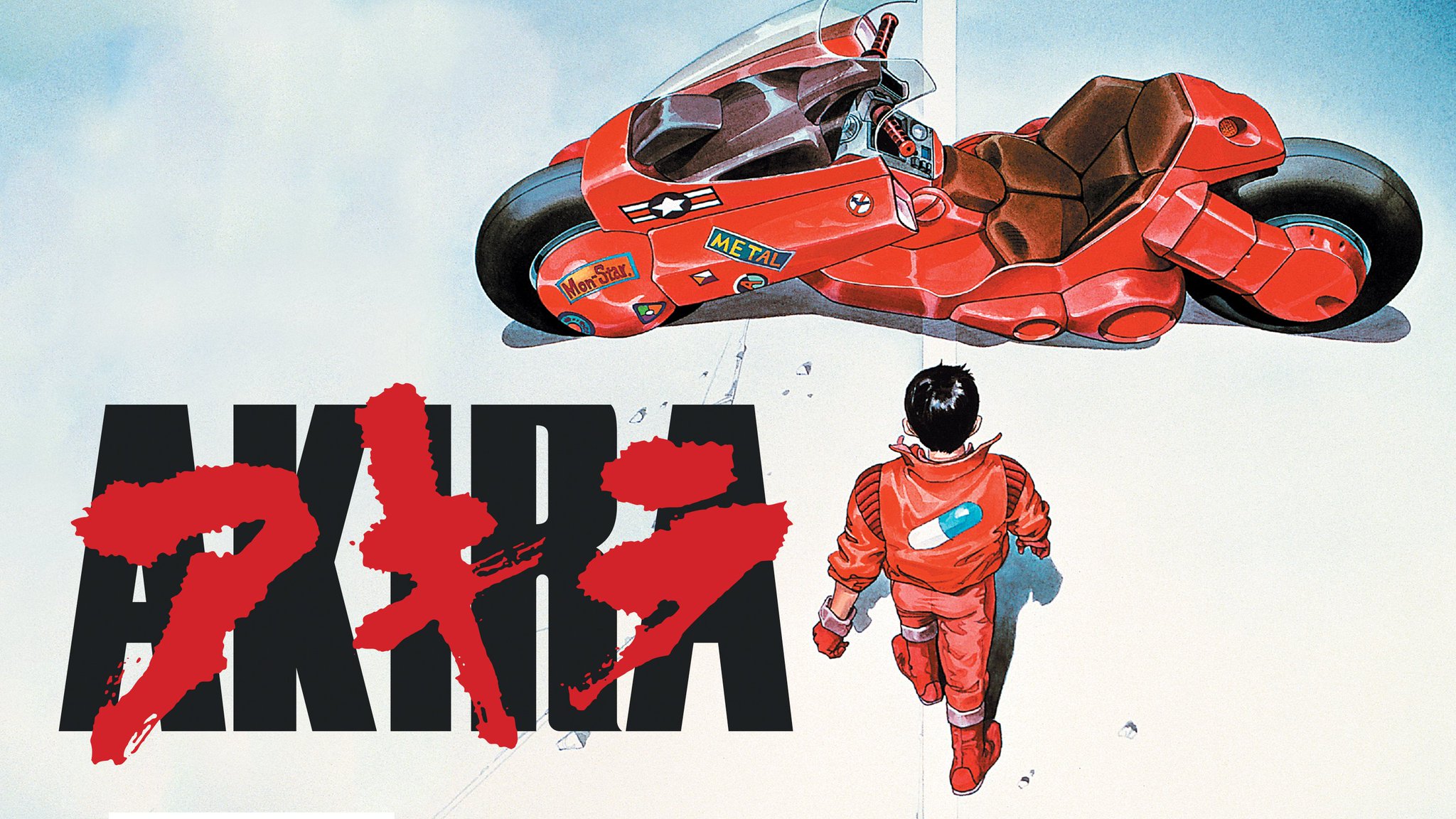
Tetsuo Shima’s “Kaori” RX7 – The Artwork of Walter Kim
In 1988, the world was introduced to AKIRA, an animated film that tells the story of Shotaro Kaneda and Tetsuo Shima, both friends and adversaries, as their story of absolute power, corruption, and morality unfold in dystopian post-apocalyptic Neo-Tokyo. In the thirty years since the film debuted, AKIRA has risen to incredible heights in pop culture, inspiring much of the cyberpunk genre as a whole, as well as having brought anime films to the forefront of art and film in the Western world. Today, AKIRA is heralded not only as one of the greatest animated movies of all time, but as one of the best science-fiction films ever produced, and its legacy has left a lasting impression on the wold of media in its entirety.
There are, of course, many reasons to see the film, with its accurate english subtitles fit to tell one of science fiction's most complicated narratives, and its english dubs praised as a close second for those more keen on focusing on the world-class animation. The film's style and aesthetic have shaped an entire genre, and last but not least, there's a bit to enjoy for motorheads like you and me. The film takes place in an alternate, far more futuristic 2019, and is centered around the Capsules, a vigilante bosozoku motorcycle gang. Shotaro Kaneda, the film's protagonist, leads the gang, and throughout the film, we're enchanted and enticed by his bike: a icon of the series. The "ceramic, double-rotor, two-wheel disk drive" bike has been built time and time again into real life counterparts, and has been re-drawn and re-imagined countless times by artists throughout the world. Enter Walter Kim, concept artist and vehicle supervisor for Dreamworks.
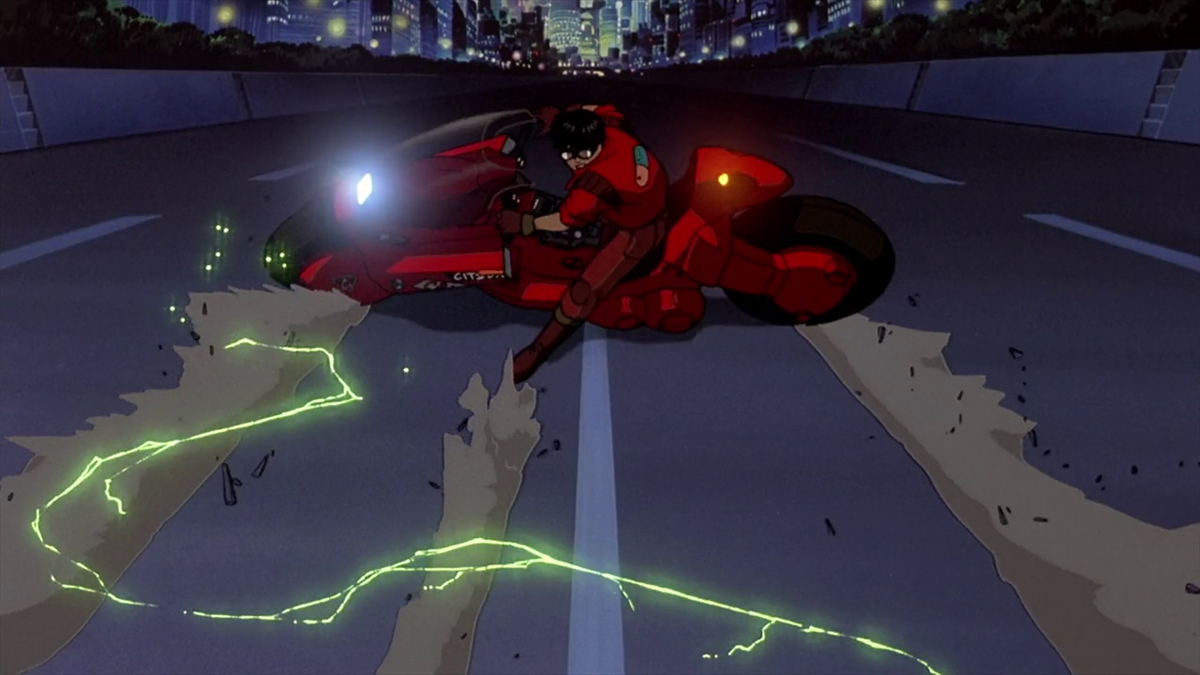
Walter has built a name in the automotive community, thanks to his incredible concept pieces and unique style. Blending a huge number of aesthetic traits and sources of inspiration, every piece he shares manages to ignite a sense of curiosity and creativity, going as far as to inspire bits and pieces of my own latest Model A build. Some of his most successful work, in respect to the internet, is a series of pieces surrounding the AKIRA universe. Walter posed the question: what if Kaneda's bike was in fact a car? The resulting vehicle, based on an aircooled 911 and the drivetrain from a 962, proved tantalizing. The colorway and graphics were clearly reminiscent of Kaneda's two-wheeled counterpart, and the design was given flavor that feels right at home in Neo Tokyo.
Following his initial designs, he refined the idea, eventually labeling it the "Porsche RSR Mutant," a clearly-GT1 inspired mid-engined prototype racer, reimagined from the ground up and fit for the aesthetic Katsuhiro Otomo and AKIRA have defined as a whole.
Walter embarked on a project to imagine and define vehicles for AKIRA's characters en masse, following Kaneda's Porsche with what he dubs as Tetsuo Shima's "Kaori" RX7. The machine is named after the character's love interest, whom he eventually (spoiler alert, 30 years later) engulfs and consumes, crushing her to death (in the movie, at least). The RX7 is unlikely to meet the same fate, though, and instead, highlights Walter's imagination in the finest detail imaginable.

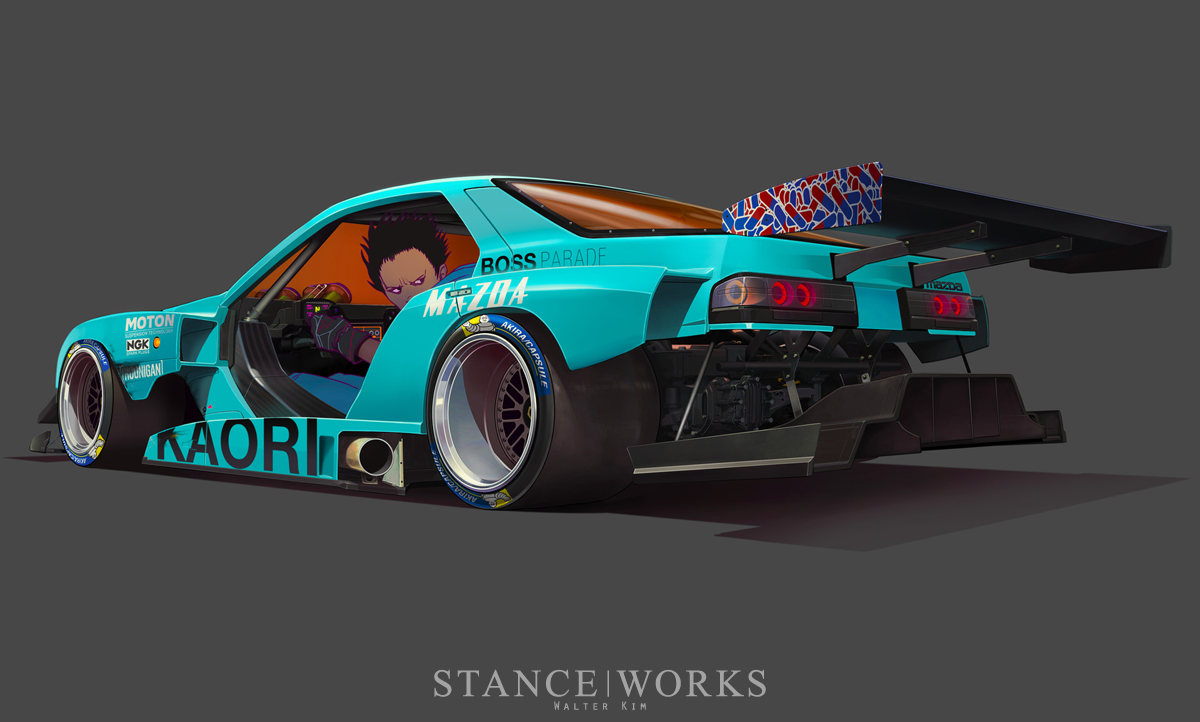
Walters work, for the longest time, has been limited to just two dimensions. Whether its pen to paper or stylus to tablet, he's brought his ideas to fruition by simply penning them out. In 2018, however, Walter set out to learn the art of 3D design, and by using Gravity Sketch VR, he was able to bring the Kaori RX7 to life in a whole new dimension.
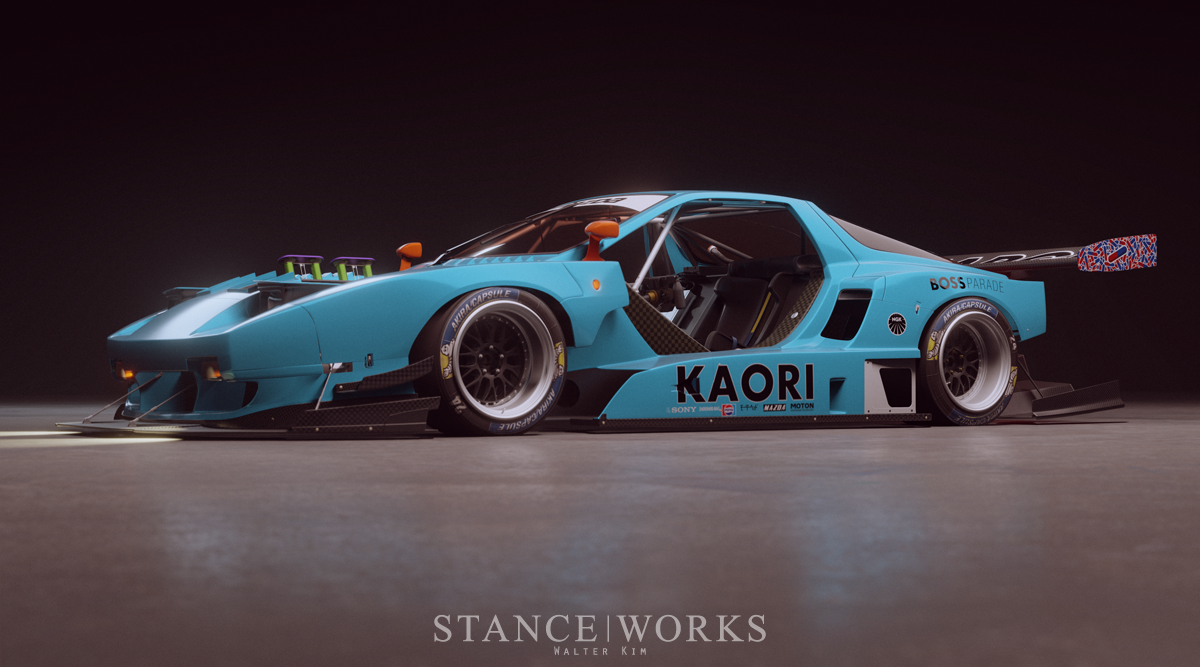
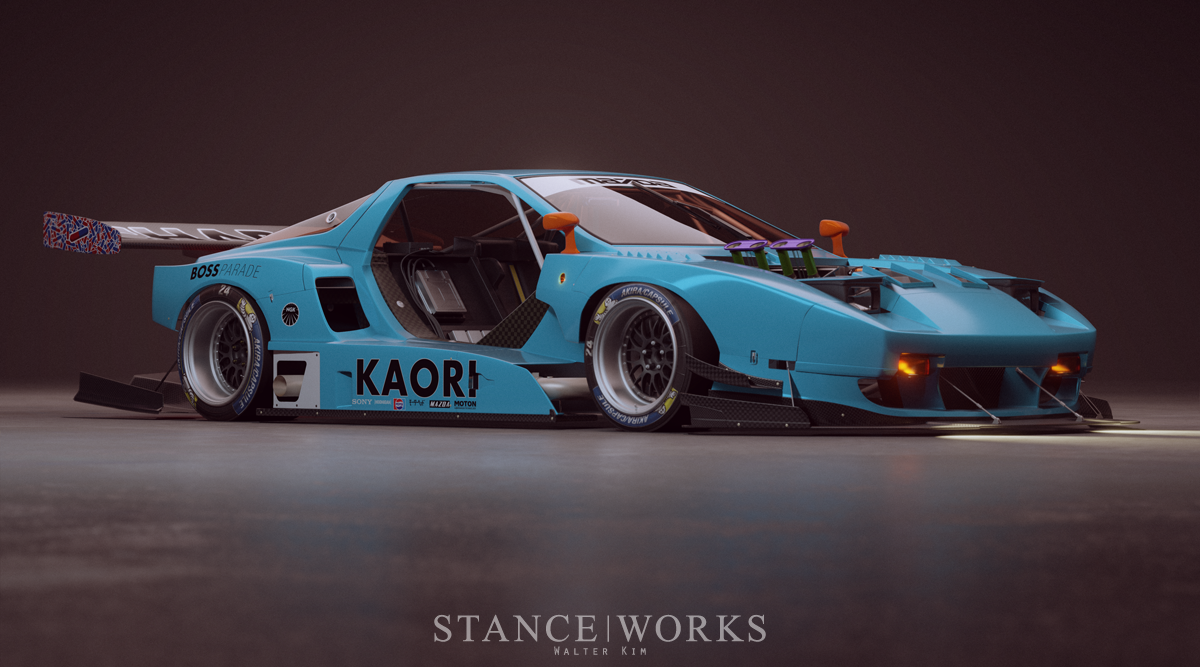
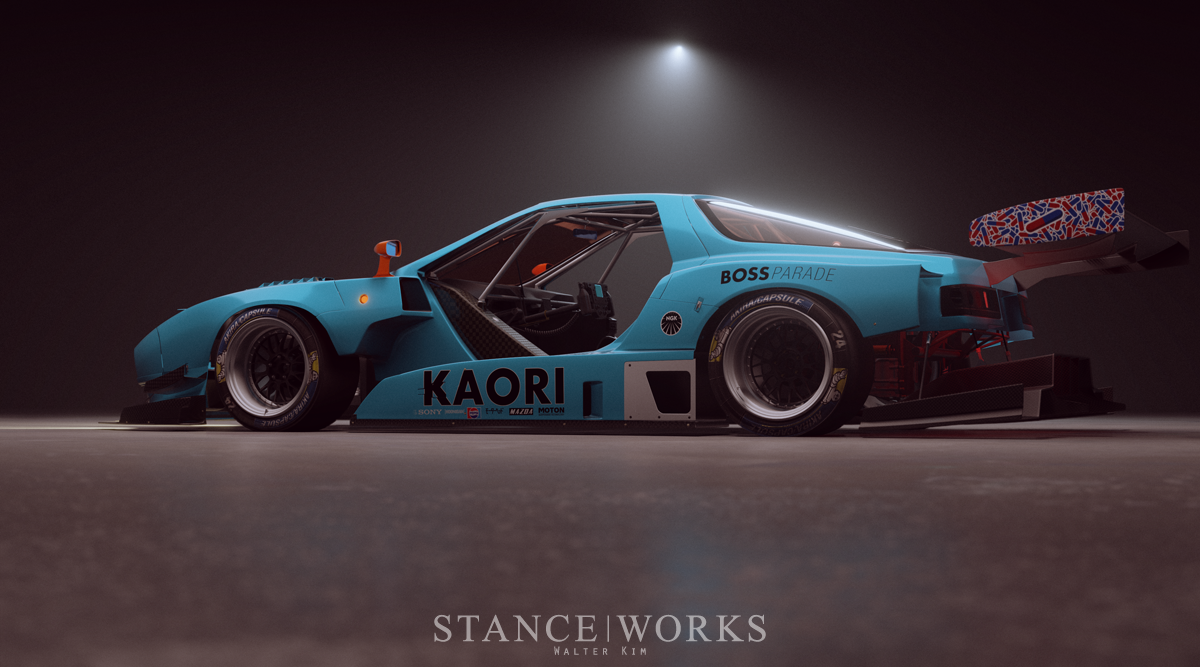
The concept begins with Mazda's FC RX7. With elements of Mazda's RX7 GTO, prototype racers, bosozoku insanity, and of course, a slew of Neo-Tokyo style, Walter Kim has designed a car that is unquestionably ahead of its time, yet somehow, period correct for its 1980s source material. The roofline and profile of the car aren't radically different from the Kaori's real-life analogue: it's the nose and hips that yield the biggest change. The view from above shows the car's radical departure from the production car, with design elements pulled from FIA's Group 5, IMSA's GTP, and clearly, some design language from machines from AKIRA itself. It's easy to imagine it screaming down the expressway of a neon-lit Tokyo in pursuit of rival gang members, with doors missing in their entirety.



Being a 3D model, Walter is able to manipulate it, sharing imagery of the car in a partial state of disassembly. Here, it more closely resembles Kaneda's Porsche RSR Mutant, and the two can easily be imagined racing around a futuristic Yokohama circuit. Details like the monocoque chassis, the roll cage structure, and even the fuel cell and transaxle can be seen and studied. Inside the cabin, the Kaori RX7 has been converted to center-drive, and at the nose of the car lies the 26B powerplant from the 787B Le Mans Champion.

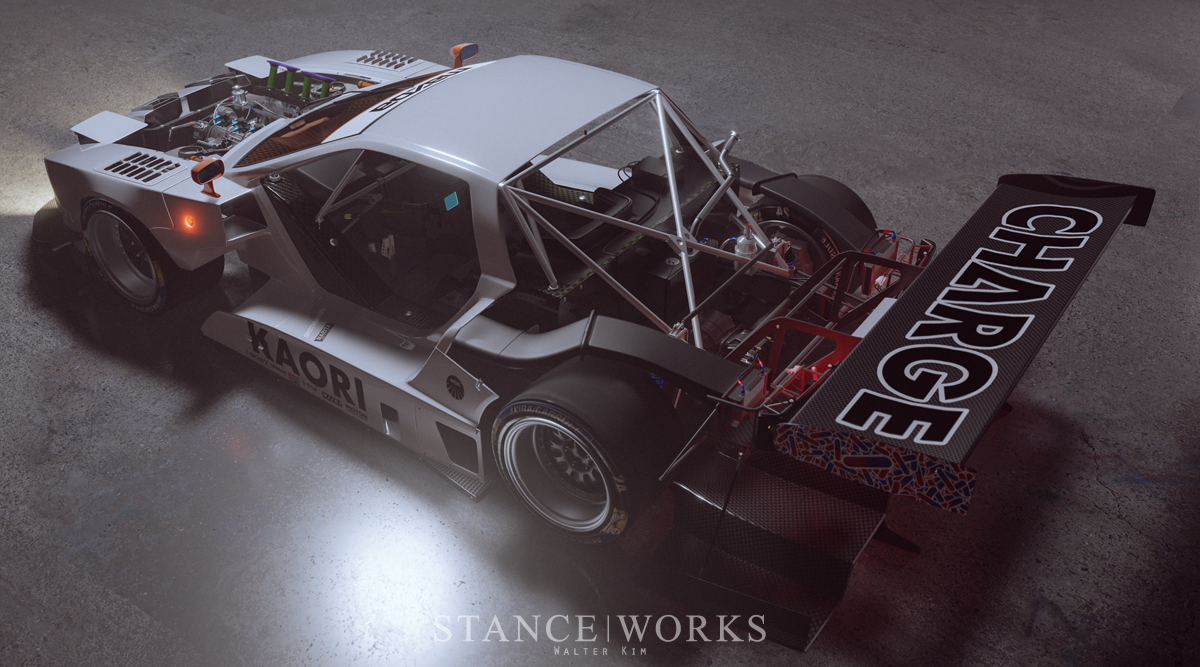

While StanceWorks has offered the opportunity to feature countless cars made of steel, aluminum, carbon, and fiber, it sometimes offers the opportunity to enjoy the art that accompanies it. While the Kaori RX7 is incredible as a concept, it represent something a bit more important: the artistic prowess and creativity of Walter Kim. Through this concept, and others, we're afforded the chance to explore the musings from one of the automotive community's most creative minds. Now, if only we could bring such a concept to the real world.
